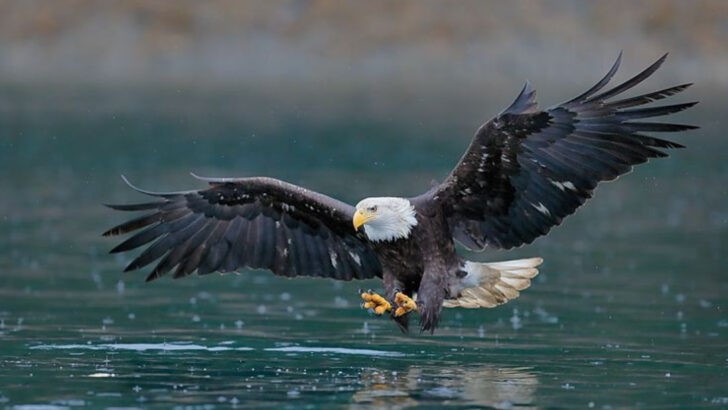Some wild animals don’t just survive—they pose. Across the U.S., there are creatures so striking, so bold, they look like they were born to be in front of a lens. Antlers against snowy backdrops, wings slicing through golden skies, eyes that pierce straight through you—these animals bring drama and beauty in every frame. They don’t need a filter. They don’t need a spotlight. Whether they’re stalking the woods of Montana or sunning themselves in a Florida swamp, they radiate wild confidence. These 28 animals are natural showstoppers—and if you’re lucky, they might just give you the perfect shot. Let’s meet the wildlife that belongs on the cover of every nature magazine.
American Bald Eagle
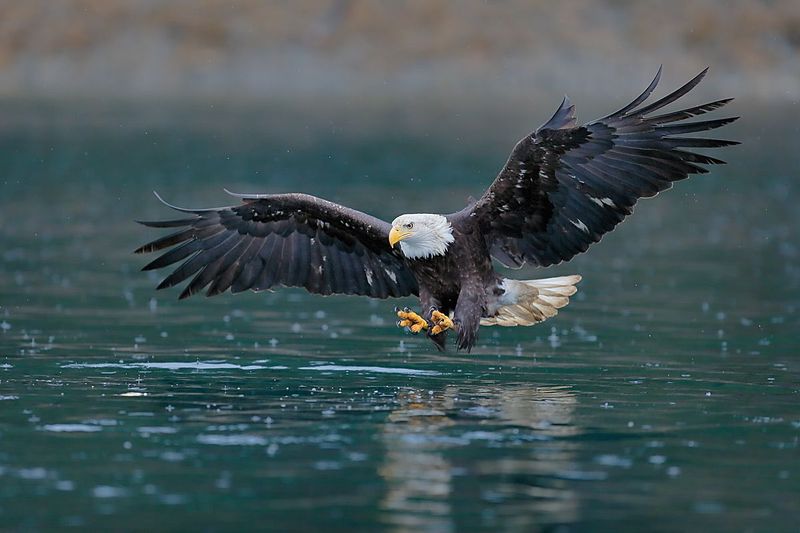
With piercing eyes and a distinguished white head, the American Bald Eagle is a symbol of strength and freedom. Found primarily in Alaska, this bird of prey captivates with its powerful presence.
Soaring gracefully through the skies, it’s a sight that inspires awe. Its sharp talons and beak make it a skilled hunter, diving to catch fish with remarkable precision.
Did you know? The bald eagle was removed from the endangered species list in 2007, marking a significant conservation success.
Grizzly Bear
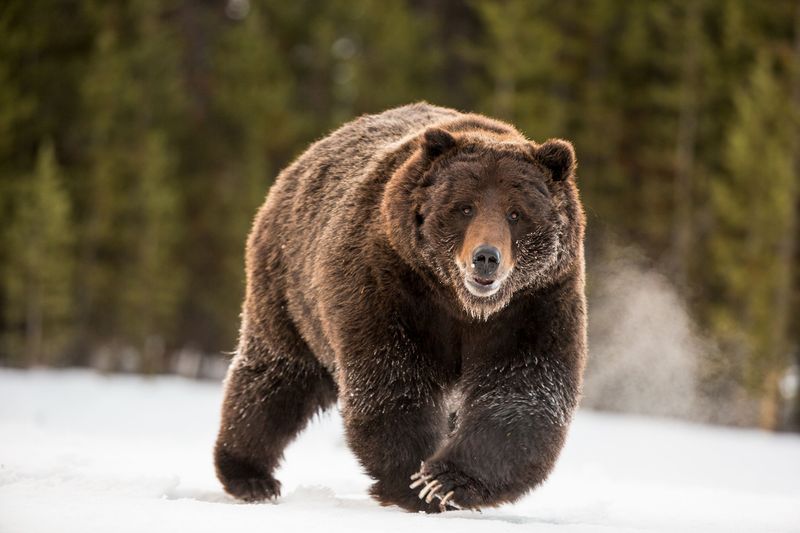
In the heart of Yellowstone, the Grizzly Bear roams with unmatched authority. These majestic creatures are known for their immense size and distinctive hump on their back.
Their thick fur allows them to thrive in various climates, making them a versatile predator. Watching a grizzly fish for salmon is a thrilling spectacle, a dance of nature’s raw power.
Fun Fact: Despite their fearsome reputation, grizzly bears are omnivores, enjoying a diet that includes berries, roots, and fish.
Florida Manatee
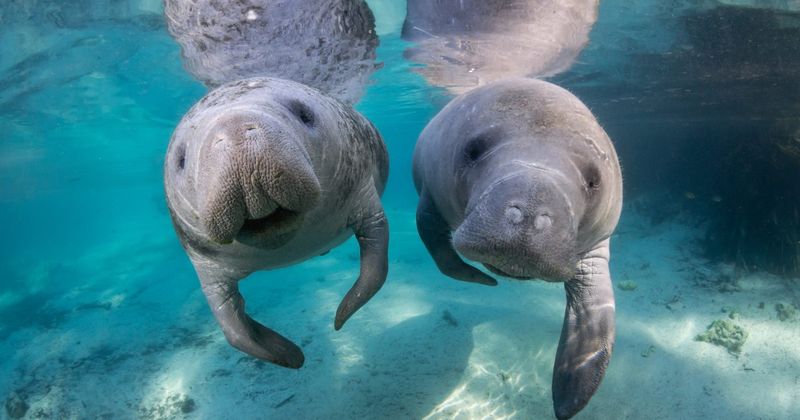
Gliding effortlessly through warm waters, the Florida Manatee’s serene presence is captivating. Often found in Crystal River, these gentle giants are known to seek out warm springs during cooler months.
With paddle-like flippers and a whiskered face, they charm with their curious nature. Snorkeling with manatees offers a unique glimpse into their underwater world.
Despite their size, they are herbivores, feasting on a diet of seagrass and aquatic plants. Conservation efforts are crucial to protect these vulnerable creatures.
Red Fox
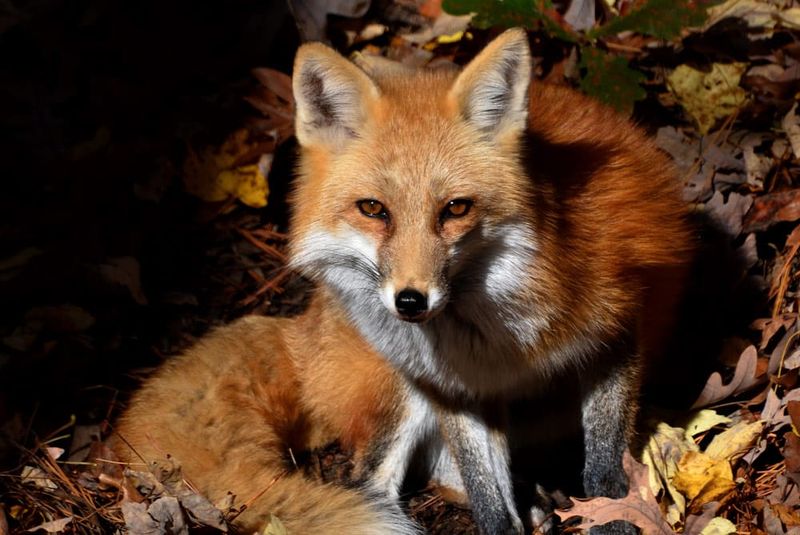
With its striking orange coat and bushy tail, the Red Fox is both playful and elusive. Commonly seen in Virginia’s forests, this cunning animal is known for its clever hunting tactics.
Foxes are solitary creatures, often spotted during twilight hours. Their diet is diverse, ranging from small mammals to fruits and insects.
Did you know? Foxes communicate with a variety of vocalizations, including barks, screams, and howls, each with its own meaning.
West Indian Manatee
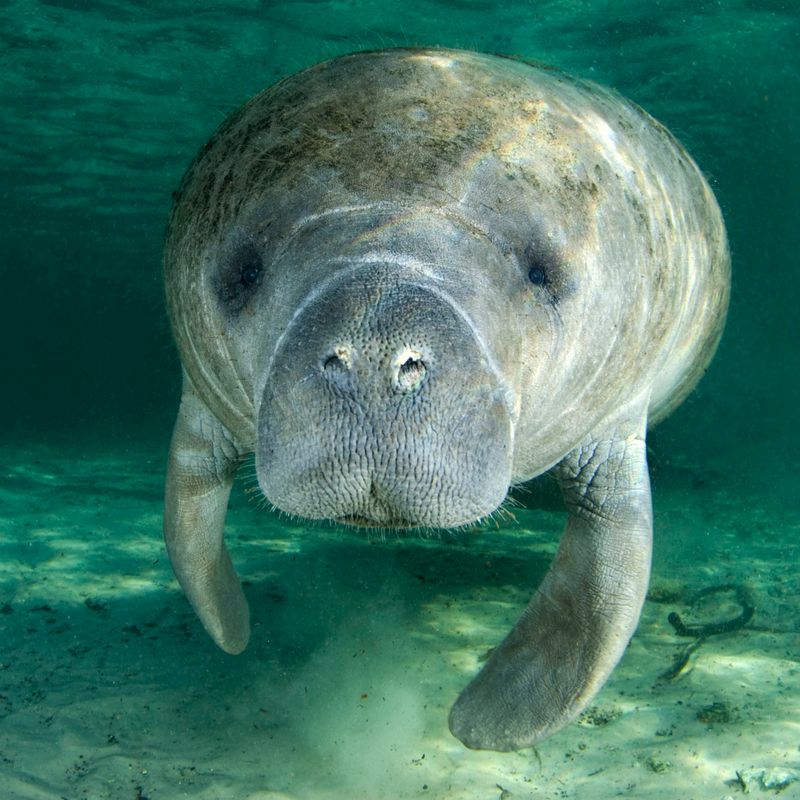
The West Indian Manatee, often mistaken for a mermaid by sailors, is a gentle mammal found in Florida’s warm coastal waters. These slow-moving creatures are known for their peaceful demeanor and large size.
Manatees are vital to the health of their aquatic ecosystems, feeding on seagrasses and algae.
Did you know? Despite their size, manatees can swim up to 20 miles per hour in short bursts. Conservation efforts continue to protect their habitats from human impact.
American Alligator
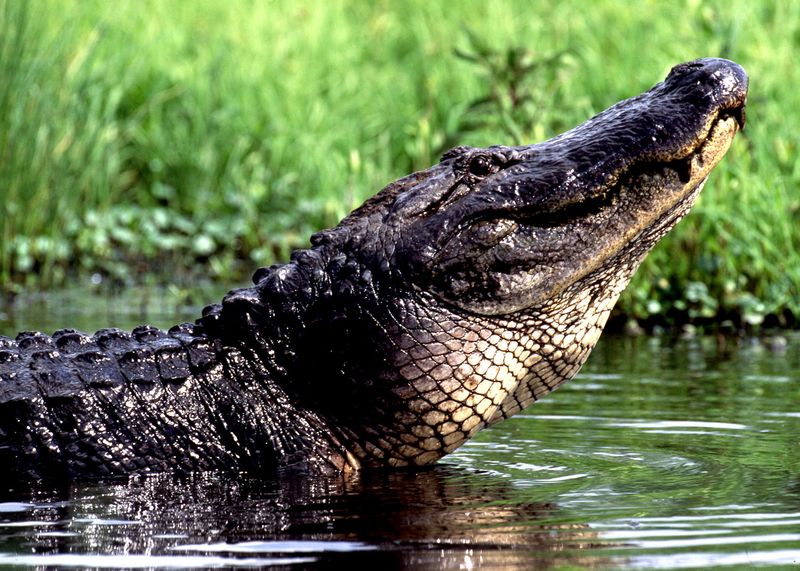
Lurking in the swamps of Louisiana, the American Alligator is a formidable predator. With its armored body and powerful jaws, it commands respect from all who encounter it.
Alligators play a crucial role in their ecosystems, helping to control the population of prey species.
Did you know? The American Alligator is one of the conservation success stories, having rebounded from the brink of extinction due to strict legal protections.
Peregrine Falcon
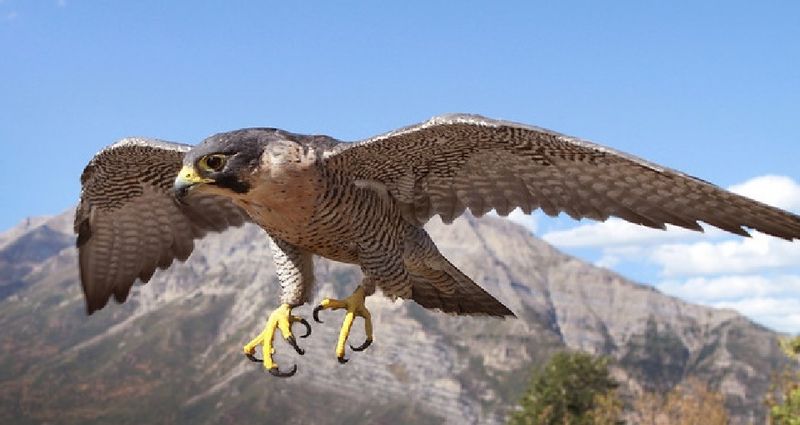
Renowned for its breathtaking speed, the Peregrine Falcon is a master of the skies. Often seen soaring over the Grand Canyon, this bird of prey can reach speeds of over 240 miles per hour during a dive.
Its keen vision allows it to spot prey from great distances, making it an efficient hunter.
Fun Fact: Peregrine Falcons are a conservation success story, having recovered from dramatic population declines due to pesticide use.
American Bison
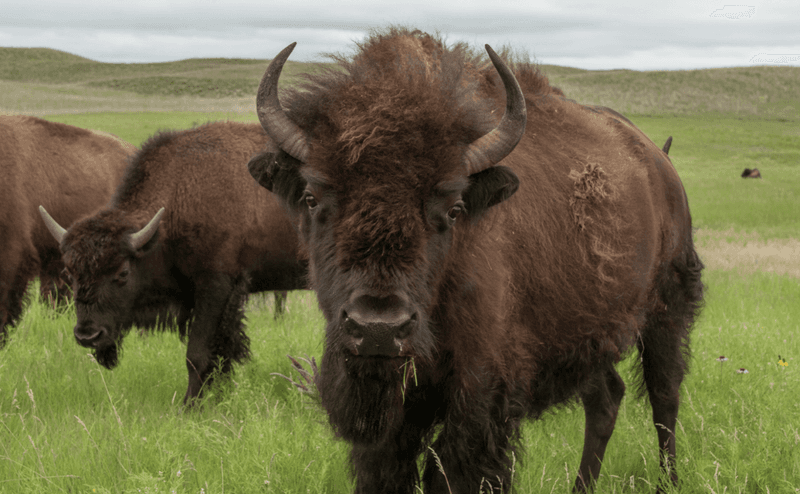
Once roaming by the millions, the American Bison now serves as a reminder of the vast prairies of the past. Found in South Dakota, these massive creatures are icons of the American wilderness.
They graze on grasses, shaping the landscape with their presence. Their thick, shaggy coats protect them from harsh weather conditions.
Did you know? Bison are the national mammal of the United States, symbolizing strength and resilience.
California Sea Otter
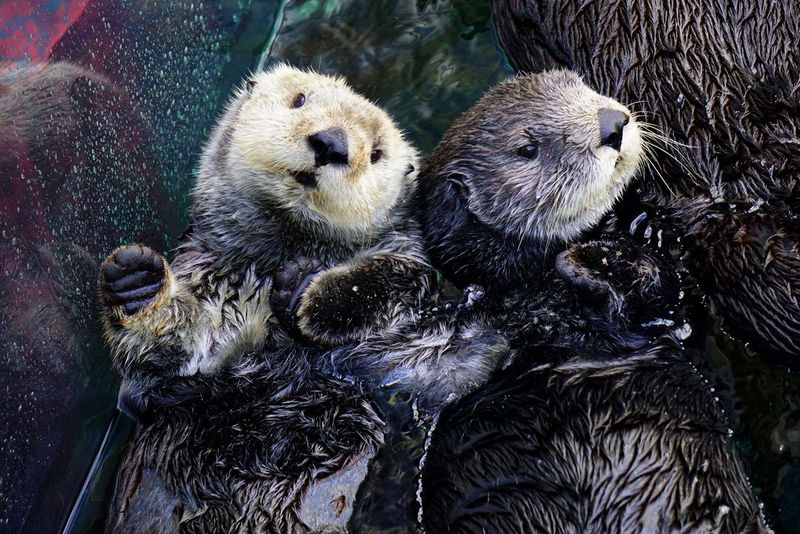
Floating playfully in the kelp forests of Monterey Bay, the California Sea Otter is a charismatic marine mammal. Known for their use of tools, they crack open shellfish using rocks.
Their dense fur is the thickest of any animal, keeping them warm in chilly waters. Watching a group of otters, known as a raft, is a delightful experience.
Fun Fact: Sea otters help maintain kelp forest ecosystems by controlling sea urchin populations.
Gray Wolf
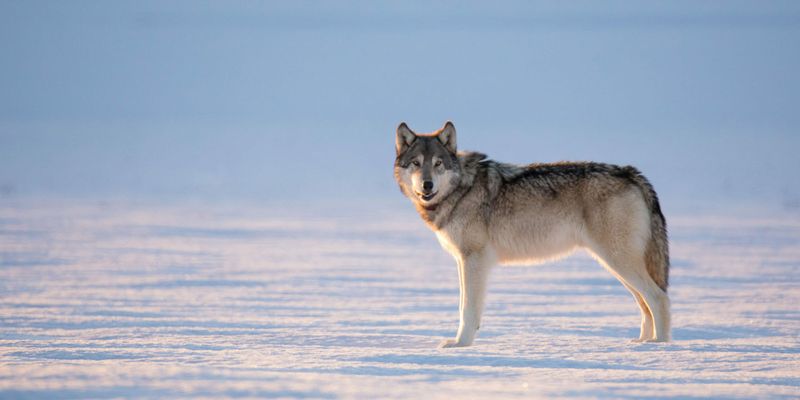
Running as a pack through Yellowstone’s snowy expanses, the Gray Wolf embodies the spirit of the wild. These social animals rely on teamwork and cooperation to hunt and thrive.
Their howls echo through the forests, a hauntingly beautiful symphony of the wilderness. Wolves play a crucial role in maintaining balanced ecosystems.
Did you know? Wolves were reintroduced to Yellowstone National Park in 1995, helping to restore the natural balance of the region.
Great Horned Owl
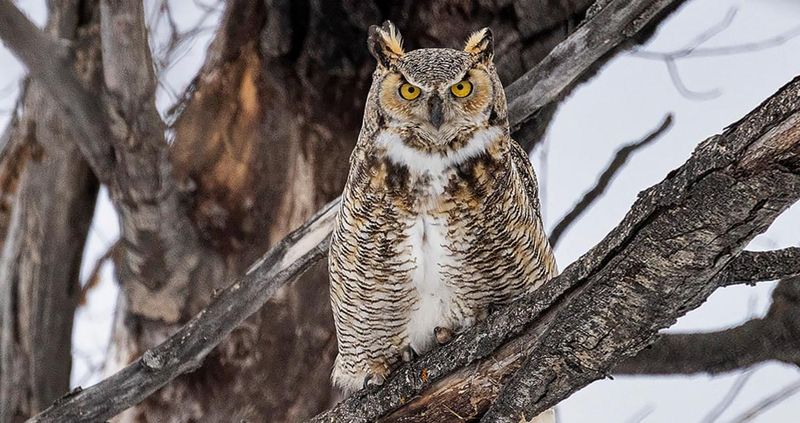
With tufts resembling horns and eyes that seem to pierce the soul, the Great Horned Owl is an enigmatic night hunter. Found in New Mexico, this owl is a master of stealth.
Its feathery camouflage allows it to blend seamlessly into its surroundings as it waits patiently for prey.
Did you know? The Great Horned Owl can rotate its head up to 270 degrees, an adaptation that aids its hunting prowess.
Mountain Lion
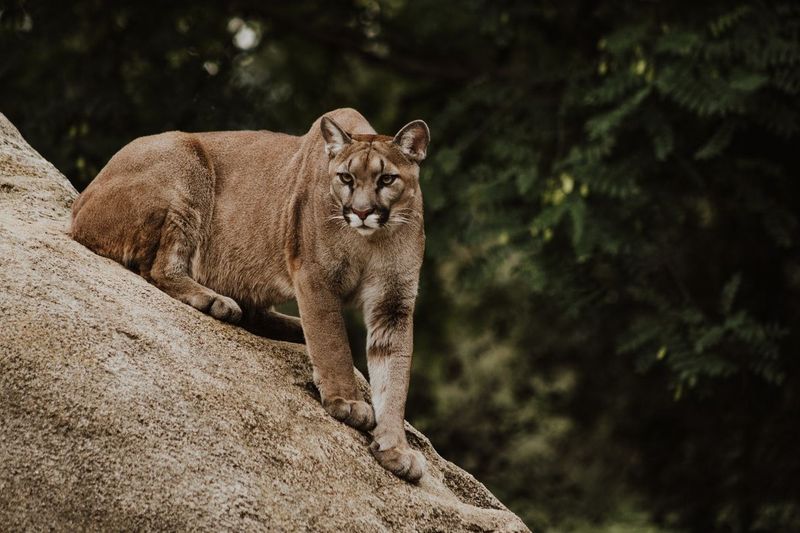
Stealth personified, the Mountain Lion moves silently through Colorado’s rugged terrain. As a solitary predator, it’s known for its strength and agility.
With a powerful build and acute senses, it excels in ambushing prey. Its territory is vast, and sightings are rare, making any glimpse a thrilling event.
Fun Fact: Mountain lions, also known as cougars or pumas, are the most widely distributed wild cat species in the Americas.
American Black Bear
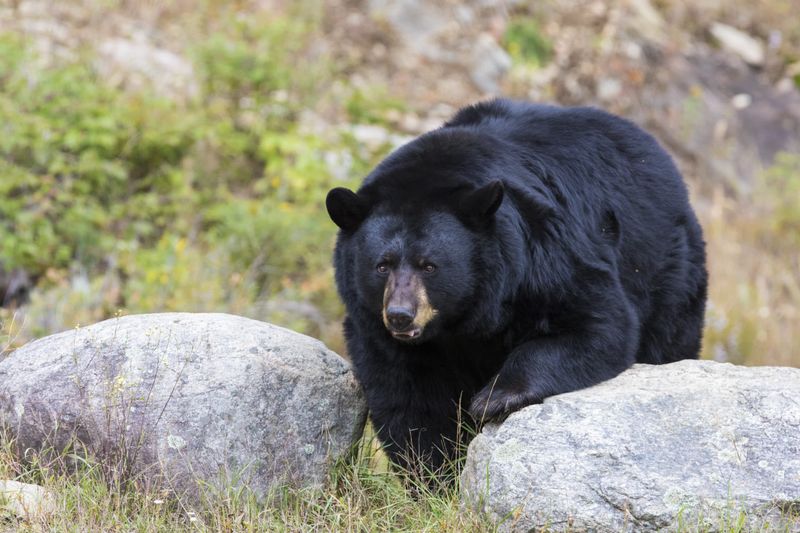
Foraging in North Carolina’s lush forests, the American Black Bear is an adaptable, omnivorous mammal. With a keen sense of smell, it navigates the wilderness in search of food.
Black bears are excellent climbers and swimmers, often scaling trees to escape threats or find sustenance.
Did you know? Despite their name, black bears can have coats ranging from black to brown, cinnamon, or even white.
Eastern Coyote
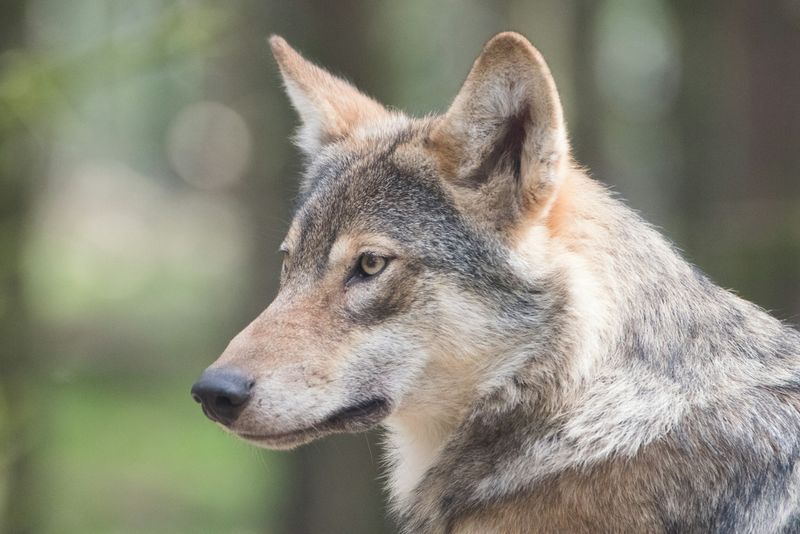
Howling under the Vermont moon, the Eastern Coyote’s eerie call is a signature of the night. These adaptable predators thrive in a variety of environments, from rural areas to urban landscapes.
Coyotes are opportunistic feeders, known for their cunning and intelligence. Their presence is often detected by their distinctive yips and yowls.
Fun Fact: Eastern coyotes have interbred with wolves, resulting in a larger size and different behavior compared to their western counterparts.
North American River Otter
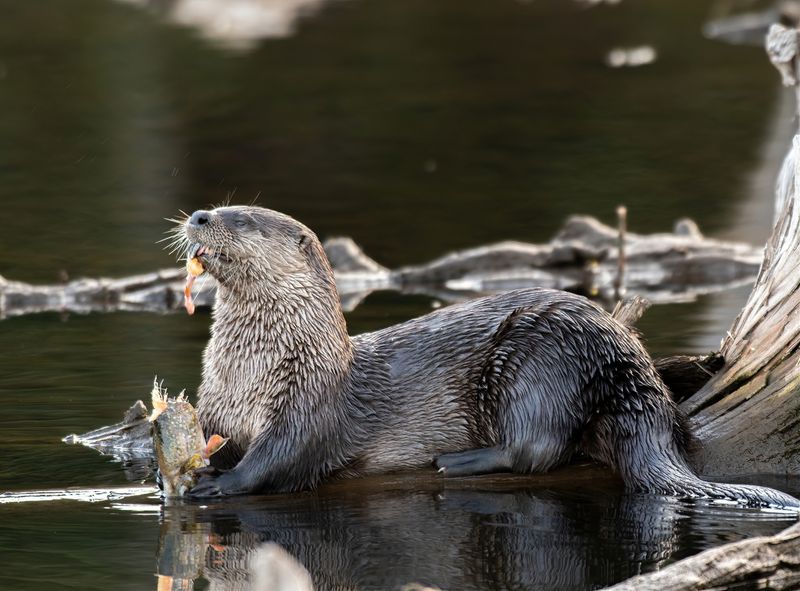
Sliding playfully down riverbanks, the North American River Otter is the embodiment of aquatic agility. Found in Minnesota, these otters are expert swimmers, using their streamlined bodies to navigate swiftly through water.
They are social creatures, often seen frolicking in groups, bringing joy to observers. Their diet primarily consists of fish and amphibians.
Did you know? River otters can hold their breath underwater for up to eight minutes, making them adept hunters in their watery domain.
Mule Deer
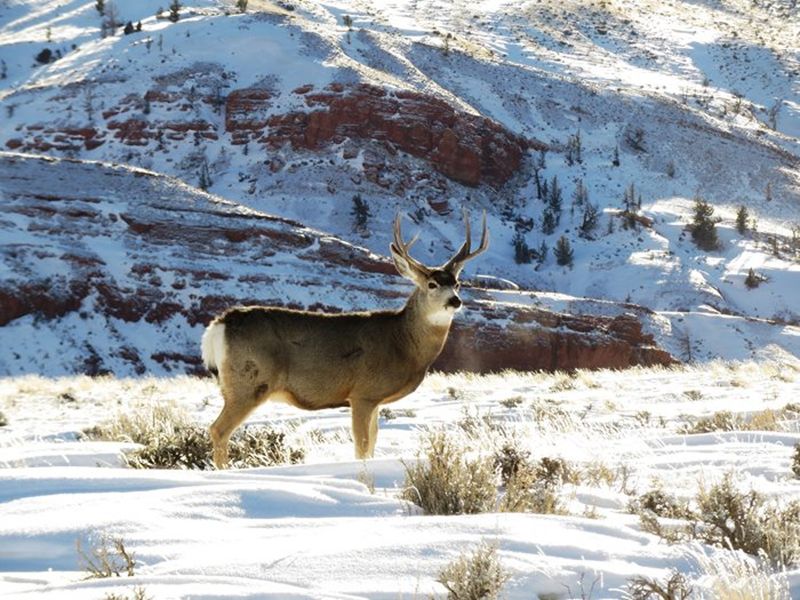
With oversized ears and a graceful stance, the Mule Deer is a familiar sight in Wyoming’s open plains. Known for their distinctive bounding gait, these deer are agile and adaptable.
Their large ears help detect predators, providing an early warning system. Mule deer feed on shrubs, grasses, and leaves, contributing to the ecosystem’s balance.
Did you know? Mule deer are named for their large, mule-like ears, which provide excellent hearing and aid in their survival.
Moose
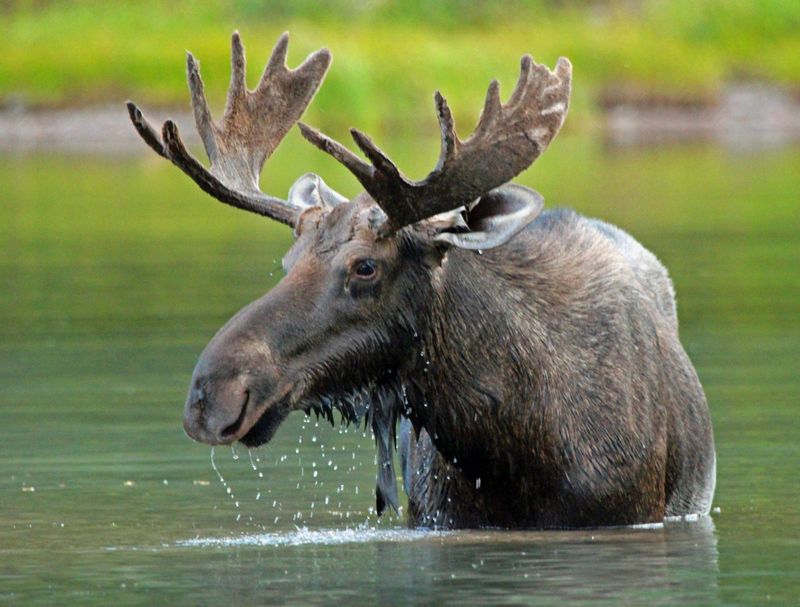
Wading through Maine’s misty lakes, the Moose commands attention with its massive antlers and towering stature. This solitary giant thrives in the northern forests, feeding on aquatic plants and shrubs.
Moose are strong swimmers, often seen crossing large bodies of water in search of food.
Fun Fact: Moose have a highly flexible upper lip that helps them grasp and strip leaves from branches, an essential adaptation for feeding in dense forest environments.
American White Pelican
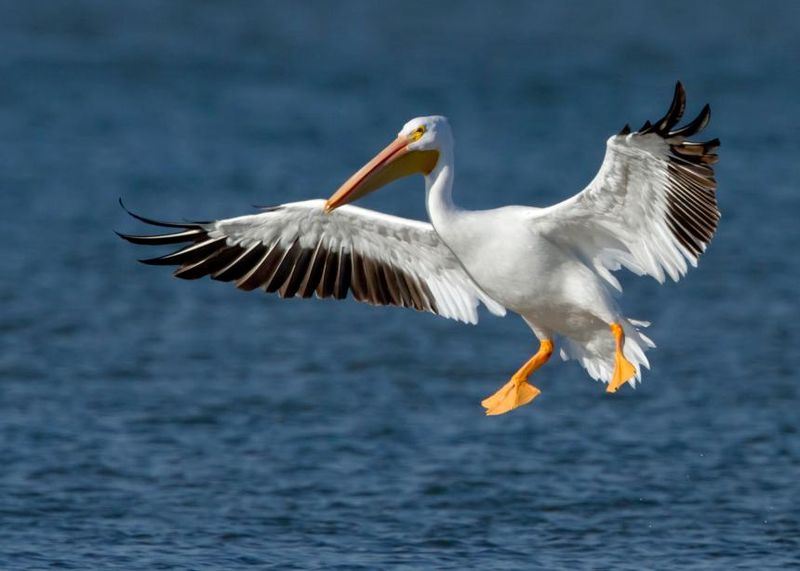
Gliding gracefully over the Great Plains’ lakes, the American White Pelican is a study in elegance. With a wingspan reaching nine feet, these birds are spectacular in flight.
Their distinctive bills are used to scoop up fish during coordinated group hunts, a fascinating display of teamwork.
Did you know? Unlike most pelicans, American White Pelicans do not dive for their food; instead, they work together to herd fish into shallow waters.
Desert Tortoise
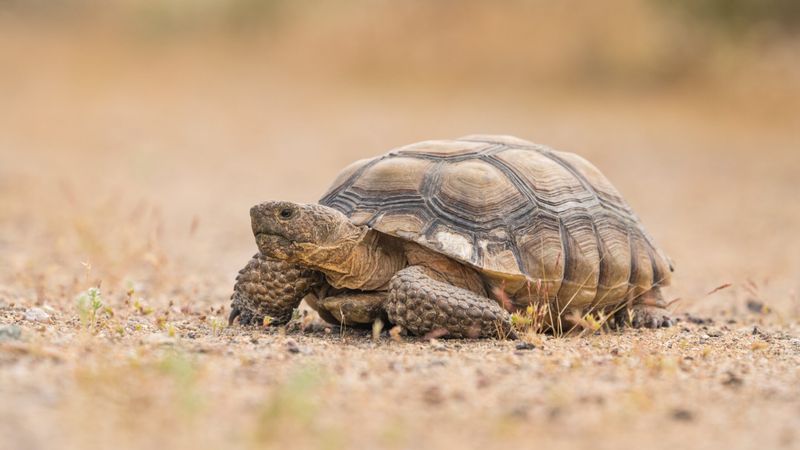
Slowly meandering across Nevada’s arid landscape, the Desert Tortoise epitomizes resilience. These land-dwelling reptiles are adapted to survive in harsh desert climates, with the ability to store water and endure extreme temperatures.
Their diet consists of native shrubs and grasses, making them an integral part of the desert ecosystem.
Fun Fact: Desert tortoises spend most of their lives in burrows, escaping the blistering heat of the desert sun.
Gila Monster
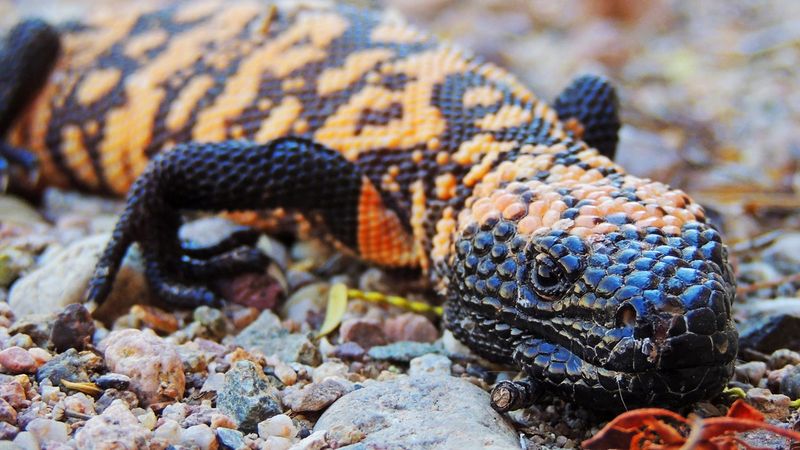
Basking under the Arizona sun, the Gila Monster is one of the few venomous lizards in the world. Recognizable by its striking orange and black patterns, this reptile is both beautiful and formidable.
Gila monsters are slow-moving and secretive, spending much of their time in burrows. Their diet includes small mammals, birds, and eggs.
Did you know? The Gila monster’s venom is not typically fatal to humans, and they play a role in controlling rodent populations in their desert habitat.
Pronghorn Antelope
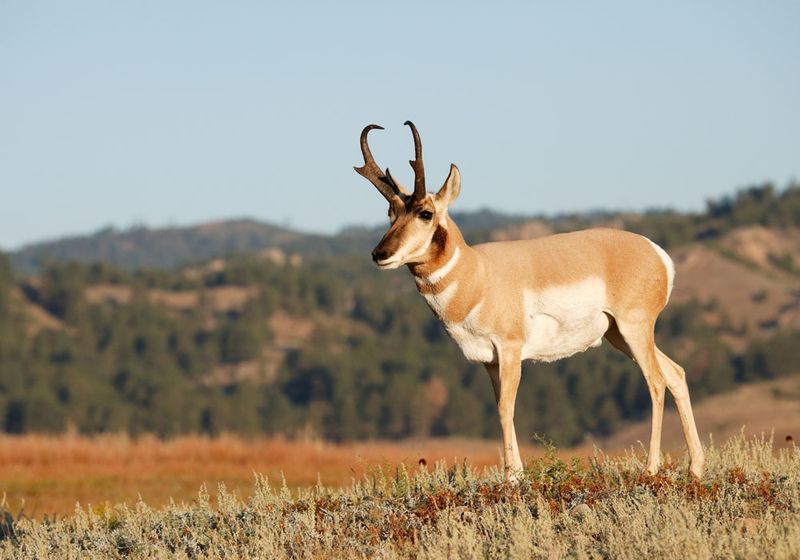
Sprinting across Montana’s open fields, the Pronghorn Antelope is North America’s fastest land animal. With speeds reaching up to 60 miles per hour, they are built for endurance and agility.
Their large eyes provide a wide field of view, aiding in detecting predators. Pronghorns migrate seasonally, following food sources across vast distances.
Fun Fact: Despite their speed, pronghorns are not true antelopes; they are unique to North America, representing their own family of ungulates.
Snowy Owl
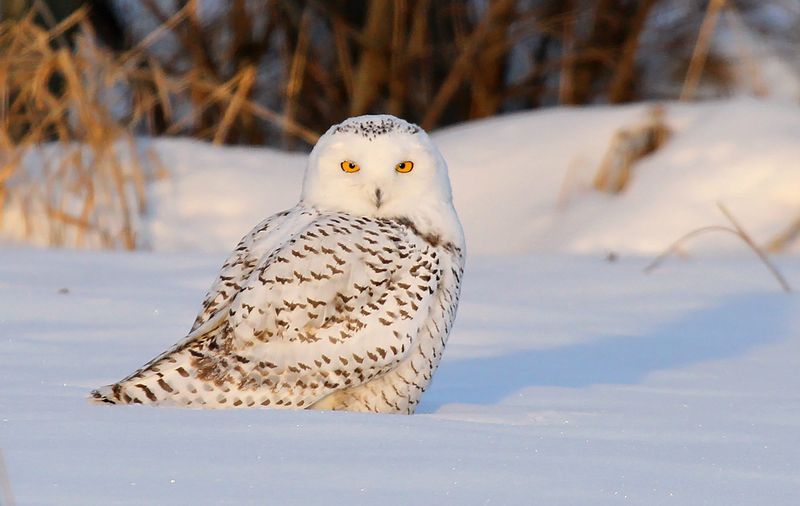
Perched elegantly in Wisconsin’s snowy fields, the Snowy Owl is a master of the Arctic. With its striking white plumage and piercing yellow eyes, it’s perfectly adapted to cold environments.
These owls are diurnal, hunting during the day, unlike most other owl species. Their diet mainly consists of small mammals, such as lemmings.
Fun Fact: Snowy owls have been known to travel great distances during the winter months, making them occasional visitors to more southern regions.
Eastern Elk
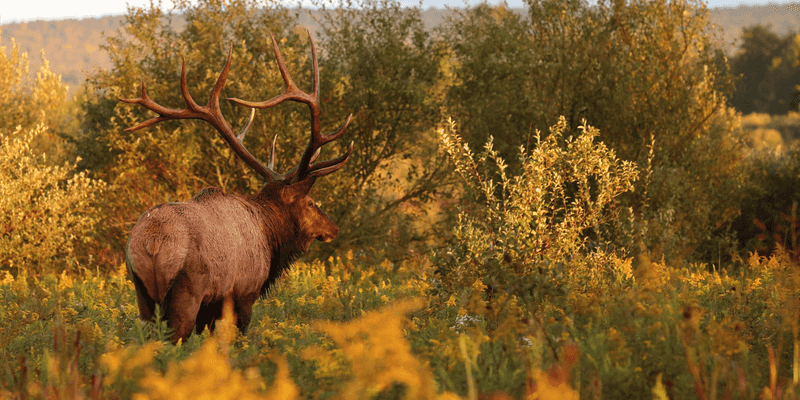
Bugling in Pennsylvania’s misty forests, the Eastern Elk is a majestic sight. Once extinct in the wild, these elk have made a comeback due to successful reintroduction programs.
Elk are social animals, living in herds and communicating through vocalizations. Their antlers, which can grow up to four feet in length, are a testament to their strength.
Did you know? Elk are known for their loud bugling calls, especially during the mating season, an eerie yet captivating sound of the wild.
American Crocodile
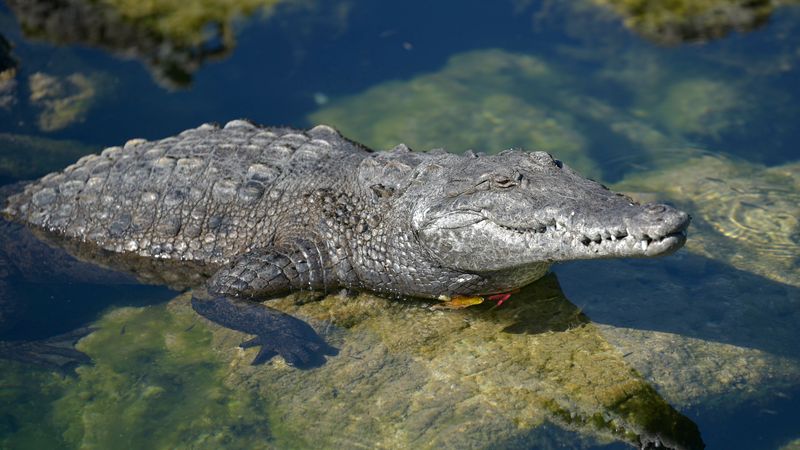
Resting on Florida’s riverbanks, the American Crocodile is a rare and ancient predator. Unlike its alligator cousin, the crocodile prefers brackish or saltwater habitats.
These reptiles are skilled hunters, using ambush tactics to capture prey. Their presence is crucial for maintaining the health of their ecosystems.
Did you know? The American Crocodile is listed as vulnerable, with conservation efforts focusing on protecting their habitats and reducing human-wildlife conflicts.
Burrowing Owl
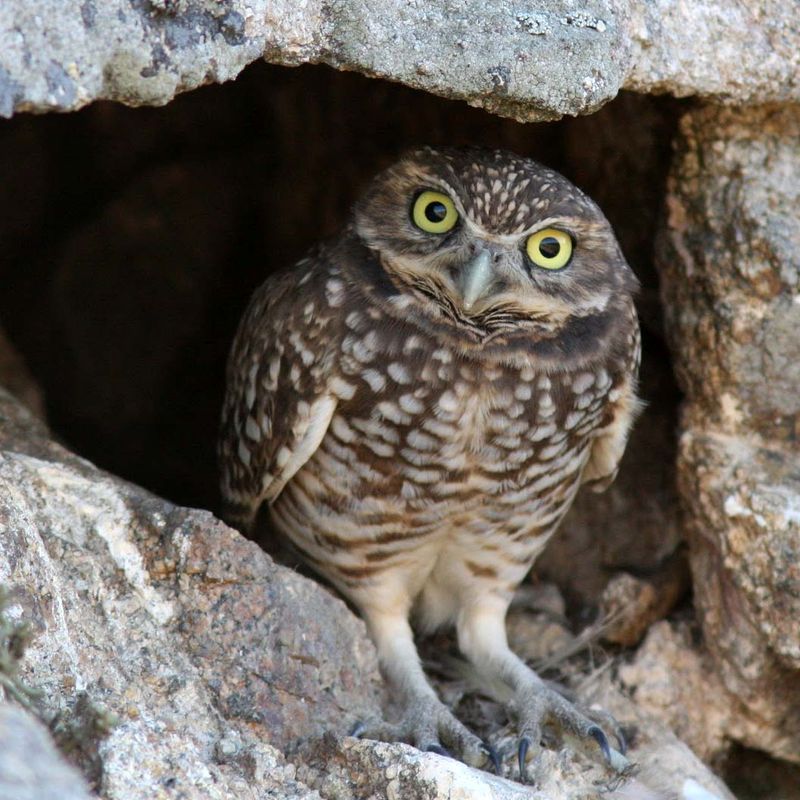
Standing atop its sandy burrow, the Burrowing Owl is a unique inhabitant of California’s arid regions. Unlike most owls, these small birds are active during the day, especially at dawn and dusk.
Their long legs make them excellent runners, and they often nest in abandoned mammal burrows.
Fun Fact: Burrowing owls are known for their curious behavior, often bobbing their heads and making a variety of calls to communicate with each other.
American Marten
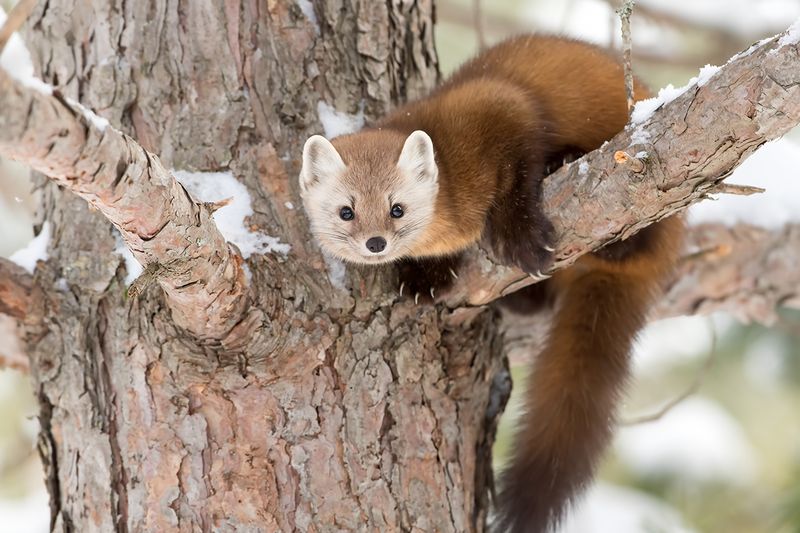
Leaping through the snowy forests of Alaska, the American Marten is a lively and agile predator. These small mammals are members of the weasel family, known for their sleek bodies and bushy tails.
Martens are expert climbers, hunting small animals and foraging for berries. Their playful nature and curiosity are a delight to watch.
Did you know? American martens have semi-retractable claws, aiding in their ability to climb and navigate through dense forest canopies.
Wood Stork
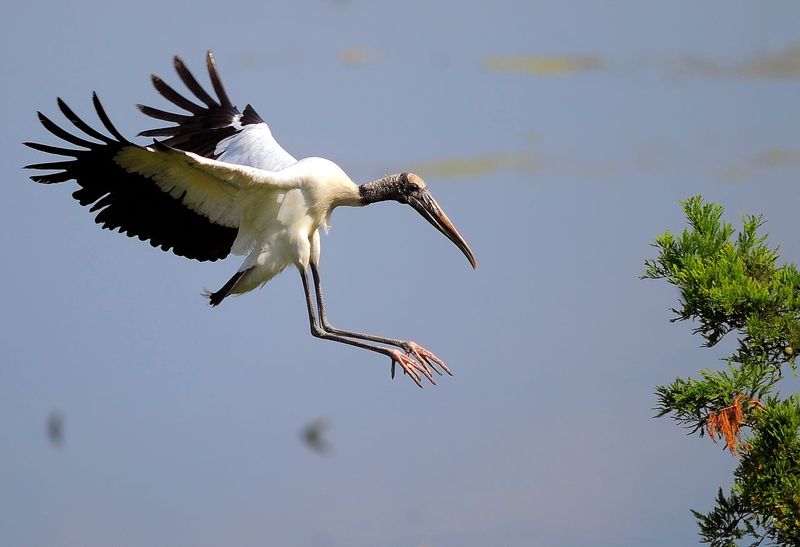
Wading through Georgia’s wetlands, the Wood Stork is a striking presence. With its bald head and large wingspan, this bird is unmistakable.
Wood storks feed by feeling for fish and invertebrates in the water, using their long bills to snap shut with remarkable speed.
Did you know? Wood storks are the only stork species native to North America, and their populations are indicators of wetland health.
Painted Bunting
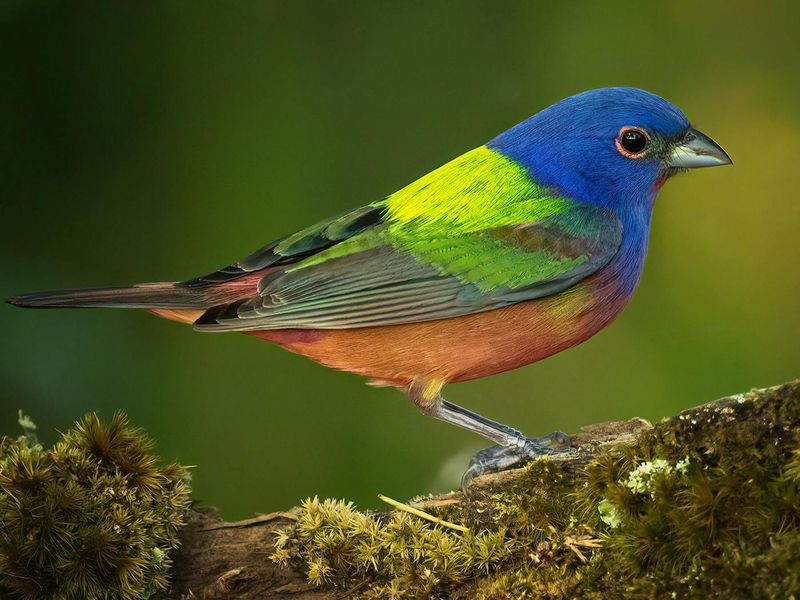
The Painted Bunting, a dazzling gem of the avian world, enchants with its vivid colors. Males boast a kaleidoscope of blue, green, and red feathers, making them a favorite among bird watchers. Found primarily in the southern U.S., these birds prefer dense brush or woodland edges.
Their melodic songs add to their charm, offering a delightful soundtrack to any nature walk. Despite their beauty, Painted Buntings are often elusive, adding to the excitement of spotting one in the wild.
Did you know? Some cultures believe seeing a Painted Bunting brings happiness and good fortune.

